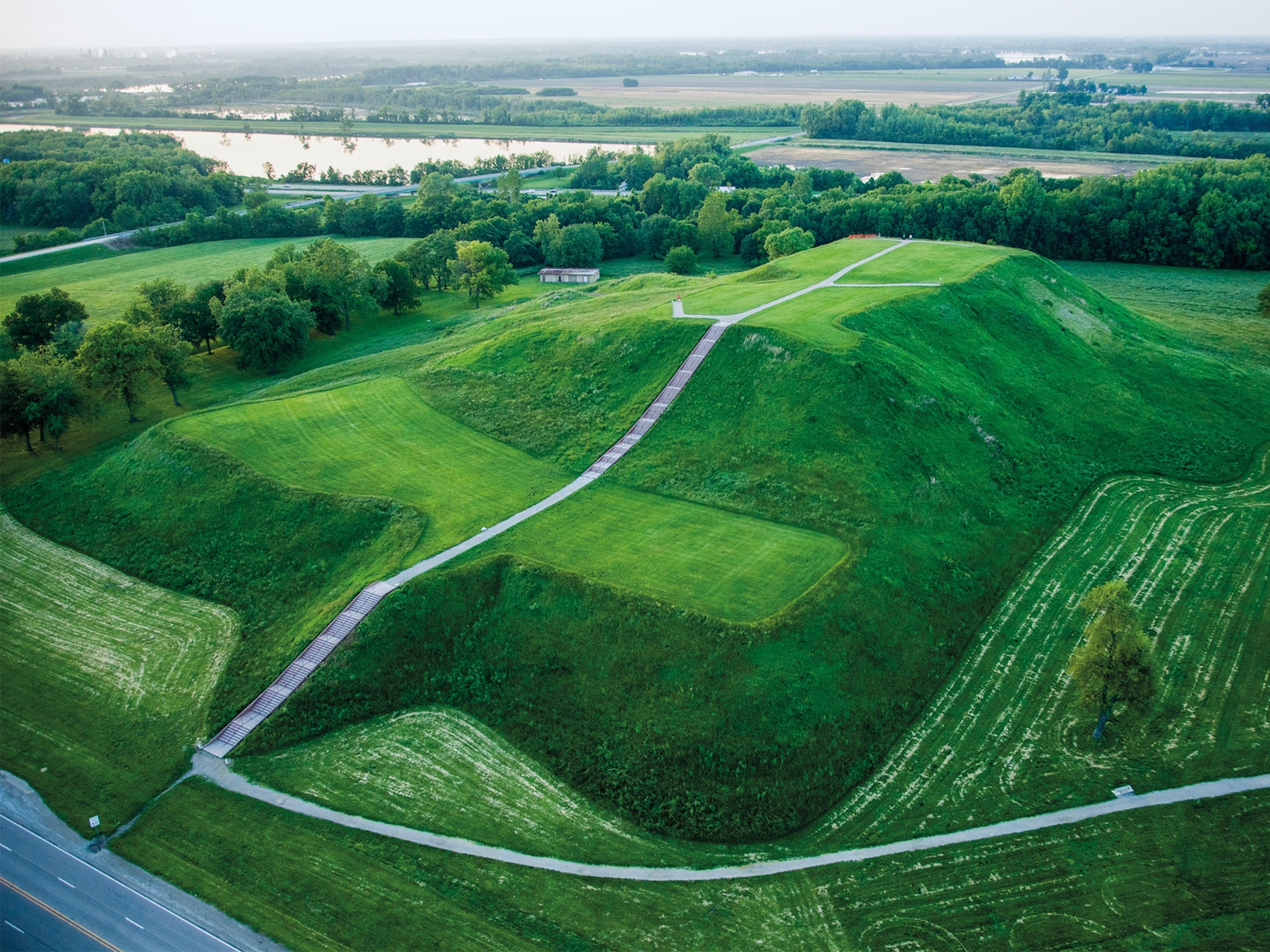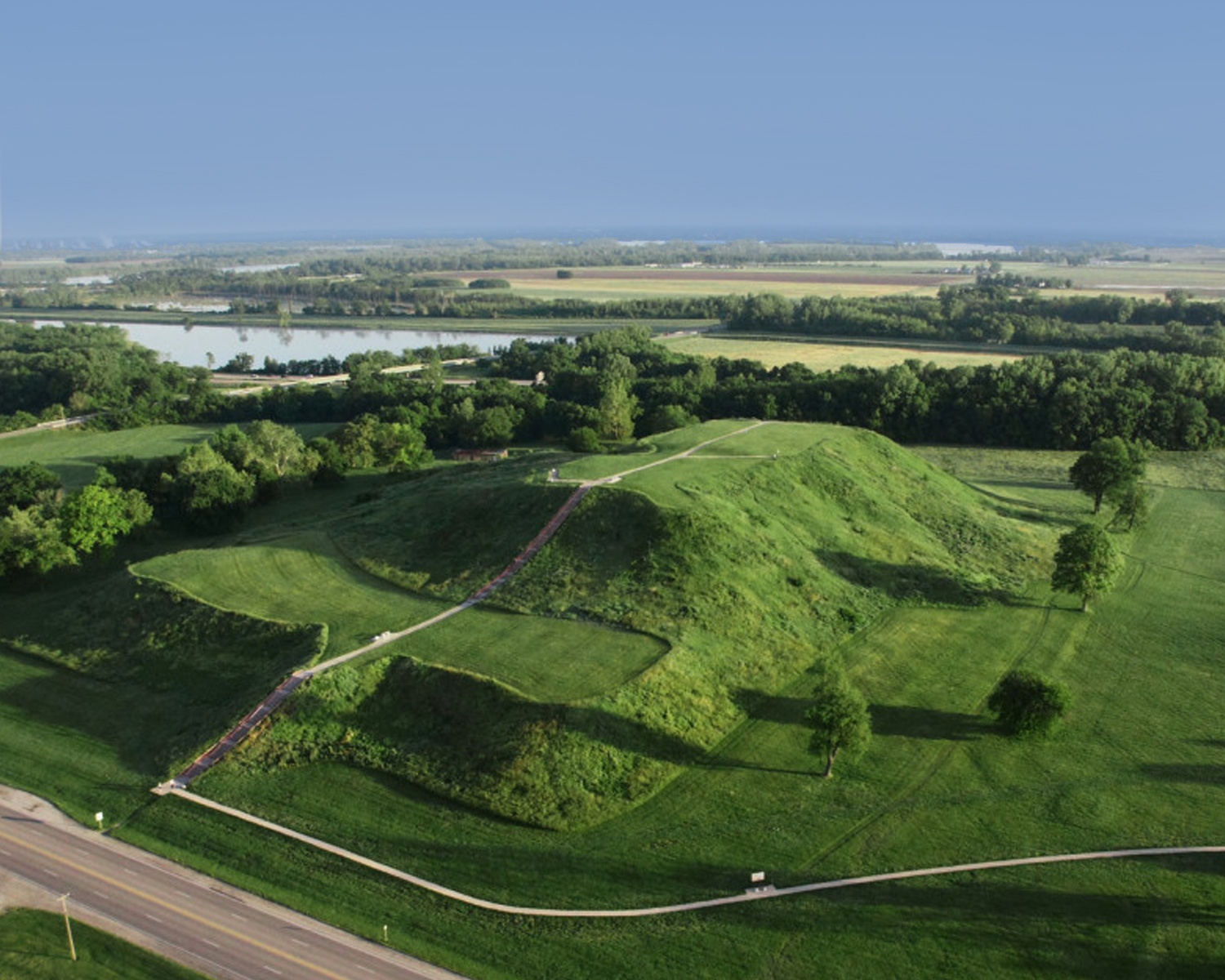Anthropology
Related: About this forumArchaeologists Dispute Theory of Largest Native American City's Abandonment
Published Jul 05, 2024 at 10:36 AM EDT
By Aristos Georgiou
Science and Health Reporter
Archaeologists have challenged a popular theory in a recent study about the abandonment of an ancient city that was the largest Indigenous settlement in North America.
Cahokia was an iconic Native American city located in what is now southern Illinois, just across the Mississippi River from present-day St. Louis, Missouri. The settlement was occupied from around A.D. 1050 and reached its apex around a half-century later.
The city served as the center of a Native American civilization known as the Mississippian culture, which flourished across what is now the Southeastern, Eastern and Midwestern United States from around the 8th century to the era of European colonization. In its heyday, Cahokia is thought to have been home to tens of thousands of people, making it one of the largest settlements in the world at the time.
But by around A.D. 1400, the city appears to have been practically abandoned. The factors driving the settlement's demise have long been shrouded in mystery and the subject of debate among scholars, with previous research indicating that a number of drivers were involved.
More:
https://www.newsweek.com/archaeologists-dispute-theory-largest-native-american-city-abandonment-1921529





Interesting Cahokia Wikipedia:
https://en.wikipedia.org/wiki/Cahokia
BoRaGard
(7,591 posts)I mean, you can read along just fine, getting all interested, but then when you get to the part of the story that will be The Big Reveal, KACHING - that'll be a buck, buddy, thank you very much.
Seeing as how its Newsweek, I am going to keep my dollar in my pocket, They lost my trust some time ago.
Judi Lynn
(164,049 posts)I will continue to post anything I can find about the original Americans.
BoRaGard
(7,591 posts)I wasn't blaming, just making note. All the wiki stuff was wonderful, eye opening ![]()
BootinUp
(50,962 posts)magicarpet
(18,457 posts)A delightful diversion from the Tangerine Menace's political chaos & mayhem.
Anthropology and archeology is like a mini trip into another dimension - a nice break from the current twisted, bent, and convoluted political realities.
Thank you for sharing this.
Judi Lynn
(164,049 posts)It has been great seeing responses from them mentioning actually being there, themselves.
I also feel obligated to post anything I can about earlier cultures who lived in the Northern and Southern Americas before they were massacred, treated like trash, then made to feel they have never belonged anywhere in their own countries, and that they are so very inferior in every way to the people who murdered their ancestors.
I support any and all efforts they are making to find life and identity here in their real homeland, forever.
You are more than kind to comment, magic carpet. Thank you. ![]()
ChazInAz
(2,993 posts)I loved visiting the park and it's museum. The climb up the main mound is a killer!
hlthe2b
(112,840 posts)were many but I thought it had to be something more dramatic and acute than the more gradual impacts of climate change. But overcrowded ancient city with limited food resources, no way to provide sanitation, and ultimately disease always seemed more likely.
'Wish we could know more from those who lived there.
EmeraldCoaster
(134 posts)I don't know you, but it's true. Keep up the great work, my interest are the same as yours. I look forward to reading anything you find to share here. Thank you
Judi Lynn
(164,049 posts)By MATTHEW PHELAN SENIOR SCIENCE REPORTER FOR DAILYMAIL.COM
PUBLISHED: 07:29 EDT, 22 June 2024 | UPDATED: 18:19 EDT, 22 June 2024
A sprawling Native American city stretching six square-miles and home to roughly 20,000 people disappeared from the Mississippi river valley over 600 years ago. And while the 'Cahokia' tribe mysteriously vanished, archaeologists have uncovered artifacts from the society that could provide clues about the group — their culture, language, and even their downfall are all still lost to history.
The team of university researchers recently discovered pottery, tools, like 'micro-drills,' and wall trenches at the Illinois site, dating back approximately 900 years.
A sprawling Native American city stretching six square-miles and home to roughly 20,000 people disappeared from the Mississippi river valley over 600 years ago. And while the 'Cahokia' tribe mysteriously vanished, archaeologists have uncovered artifacts from the society that could provide clues about the group — their culture, language, and even their downfall are all still lost to history.
The team of university researchers recently discovered pottery, tools, like 'micro-drills,' and wall trenches at the Illinois site, dating back approximately 900 years.
More:
https://www.dailymail.co.uk/sciencetech/article-13556203/New-discoveries-Native-American-Illinois.html
wnylib
(25,355 posts)does not seem to know much about Cahokia even if he is listed as a "science" writer.
Most sources of information about Cahokia do not say that it was the city of a specific, single tribal nation. It apparently began as a ceremonial center that drew people from a variety of Native American ethnic identities.
I've often wondered if there was a Mesoamerican influence on the Mississippian Culture due to similarities in the structure and use of the mounds at Cahokia to the shape and ceremonial use of pyramids in Mesoamerica. The Maya used stones because that's what was available there. On the plains of what is modern Illinois, soil was the available resource for building. The tops of the mounds were flat with evidence of a ceremonial leader, i.e. a priest, living there.
The cultures of Mesoamerica had traders who travelled far. The Maya traders sailed along the coast of the Gulf of Mexico. The Mississippi River empties into the Gulf. The Mississippian Culture was spread along the Gulf Coast and tributaries of the Mississippi River. Ideas in architecture, religious customs, political structures, etc. get spread through trade.
Since maize was first developed and cultivated as a domestic crop in Mesoamerica and eventually spread both north and south of Mesoamerica, there must have been some interchange between cultures near Mesoamerica that then spread to other societies that neighbored the societies to which maize had spread, like stepping stones.
More direct trade along water routes by traders would also have spread maize cultivation, allowing an agricultural basis for larger settled communities to develop. Maize had a religious significance in both Mesoamerica and societies to the north where maize cultivation spread, so more than just the maize seeds got passed along from one culture into another.
I am not suggesting that Cahokia was a colony of the Maya or of any other society. But I do think that ideas that were incorporated into the Mississippian Culture were spread through direct and intermediary contact. In locations where the ideas had spread, they would have been adopted and blended into already existing societies far from the origin centers of those ideas, creating a new culture that combined local and distant customs.
Cultural exchange through direct and intermediary trade occurred many times in many places in human history. Consider how the trade in spices and silk influenced European cultures through intermediary trade with India and China via overland and water routes. In southern Europe, the Italian peninsula ports devoped financially from that trade. That financial growth helped arts to flourish. As far away as Britain and other northern European nations, the trade products from eastern and southeastern Asia became social division markers. The wealthy and titled people wore silk and had foods prepared with "exotic" spices. Sumptuary laws included silk as a fabric that was forbidden to be worn by unauthorized people, along with certain furs and clothing styles.
I have not read about Mesoamerican influence on the Mississippian Culture that Cahokia was part of. There is only mention that maize agriculture spread throughout North America in climates where it could be grown. But it spread somehow. I would like to see studies about that spread of both maize and cultural ideas.
.